The Seasonic PRIME Titanium PSU (650W, 750W, 850W) Review: Mythical Performance
by E. Fylladitakis on April 7, 2017 9:00 AM ESTCold Test Results
For the testing of PSUs, we are using high precision electronic loads with a maximum power draw of 2700 Watts, a Rigol DS5042M 40 MHz oscilloscope, an Extech 380803 power analyzer, two high precision UNI-T UT-325 digital thermometers, an Extech HD600 SPL meter, a self-designed hotbox and various other bits and parts. For a thorough explanation of our testing methodology and more details on our equipment, please refer to our How We Test PSUs - 2014 Pipeline post.
| Seasonic PRIME Titanium Efficiency (~25ºC Ambient Temperature Testing) |
||||
| % | Titanium Requirements (230AC) |
650TD | 750TD | 850TD |
| 10 | 90% | 93.1% | 93.2% | 92.9% |
| 20 | 94% | 94.2% | 94.2% | 94.1% |
| 50 | 96% | 96.3% | 96.2% | 96.1% |
| 100 | 91% | 94.8% | 94.8% | 94.8% |
We usually expect to see an 80Plus Titanium certified unit to borderline pass or even fail the certification requirements during our testing. This is because we are supplying 230V AC to the unit and most models have been optimized for an 110V AC input, as the certification requirements are significantly lower and makes it slightly easier for the designer to meet them. Seasonic positively surprised us because all three of the new PRIME Titanium units are extremely efficient, easily meeting the stricter 80Plus Titanium performance requirements with an input voltage of 230V AC. The top efficiency of all three units is ~96.2% when operating at 50% capacity, with a nominal load range (20%-100%) efficiency average of 95.1% (650W model) to 95.3% (750W/850W models). The low load efficiency with the PRIME Titanium PSUs operating at 10% capacity is above 84.5%, which is much higher than the peak efficiency many low-cost PSUs can hope to achieve. Still, the efficiency of the units once they reach 20% capacity is so high that the thermal losses actually seem to drop instead of increasing.
Please note that we had the hybrid fan mode disabled during our testing in order to showcase the low load noise levels with the fan turned on. With the hybrid mode turned on, the fan starts when the load reaches about 20-25% of the unit’s rated capacity.
The internal operating temperatures of the Seasonic PRIME Titanium are very low, which is to be expected with such an efficient design. The cooling fan initially appears to have a “ladder” behavior, increasing its speed in steps in relation to the load, but the thermal control circuit is actually linear. When the units are operating in an ambient temperature environment, the speed increases are just very small in relation to the fan’s operating range, which appears as a step-like behavior on a chart. The fan of any of the three units did not even reach 50% of its rated speed at maximum load under these operating conditions, operating way below its optimal range and barely reaching audible sound pressure level figures.
The hybrid fan mode is the only thing that does not make much sense with these three units. If the setting is set to off, the fan will start as soon as the PSU is powered on regardless of the load, but will still retain its minimum possible rotational speed until the thermal control circuit decides that it needs to spin faster. The fans of the PRIME Titanium units are inaudible when running at such low speeds. If the setting is turned on, the fans will start before the point they become audible with the setting turned off, meaning that there is no practical difference at low loads whether the fan is spinning or not. Considering that the fans of the units are inaudible when spinning at their minimum speed, it might be wise to keep the hybrid mode turned off. Lower operating temperatures can only increase the longevity of a PSU, even one as good as this one.


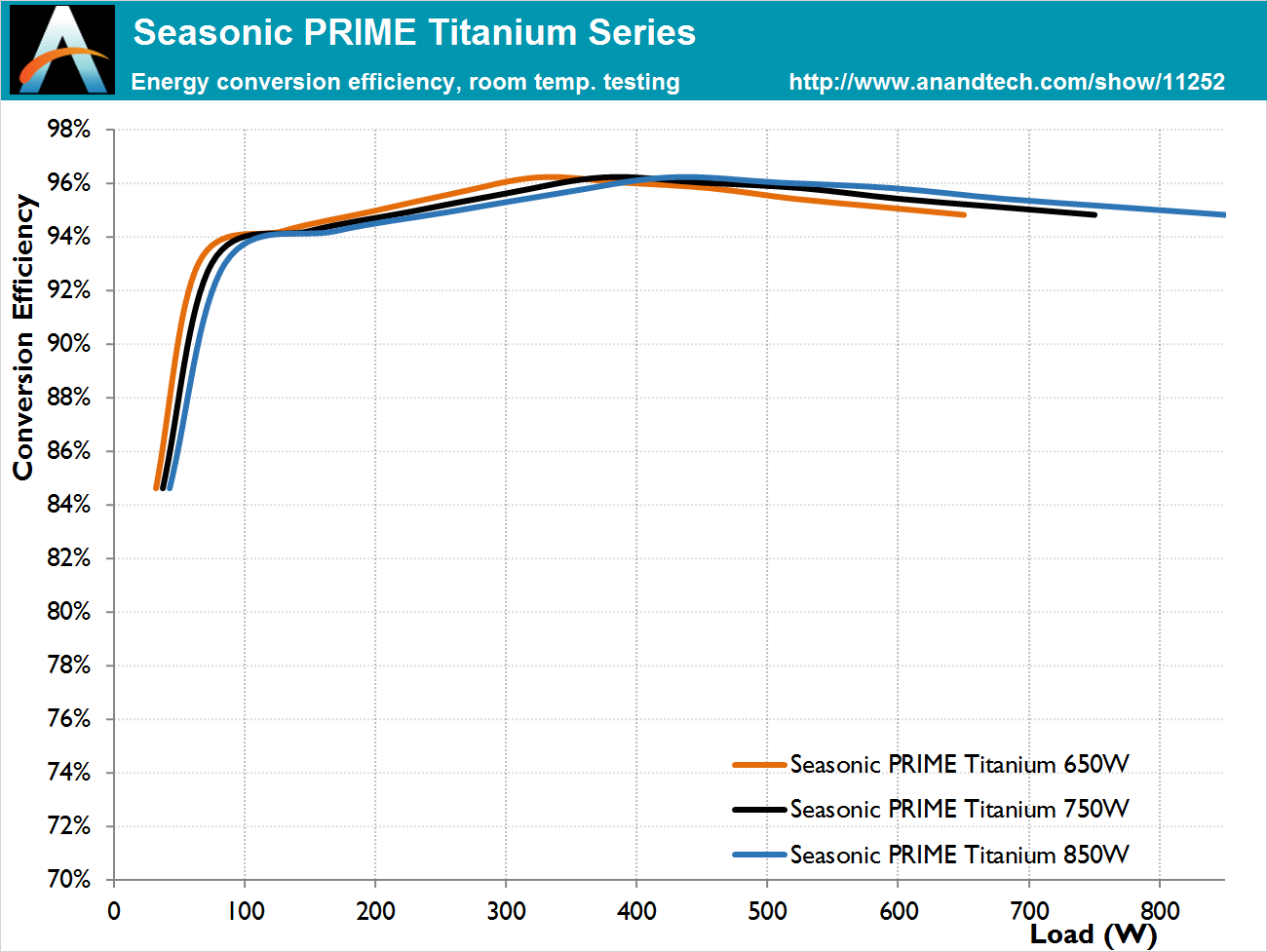
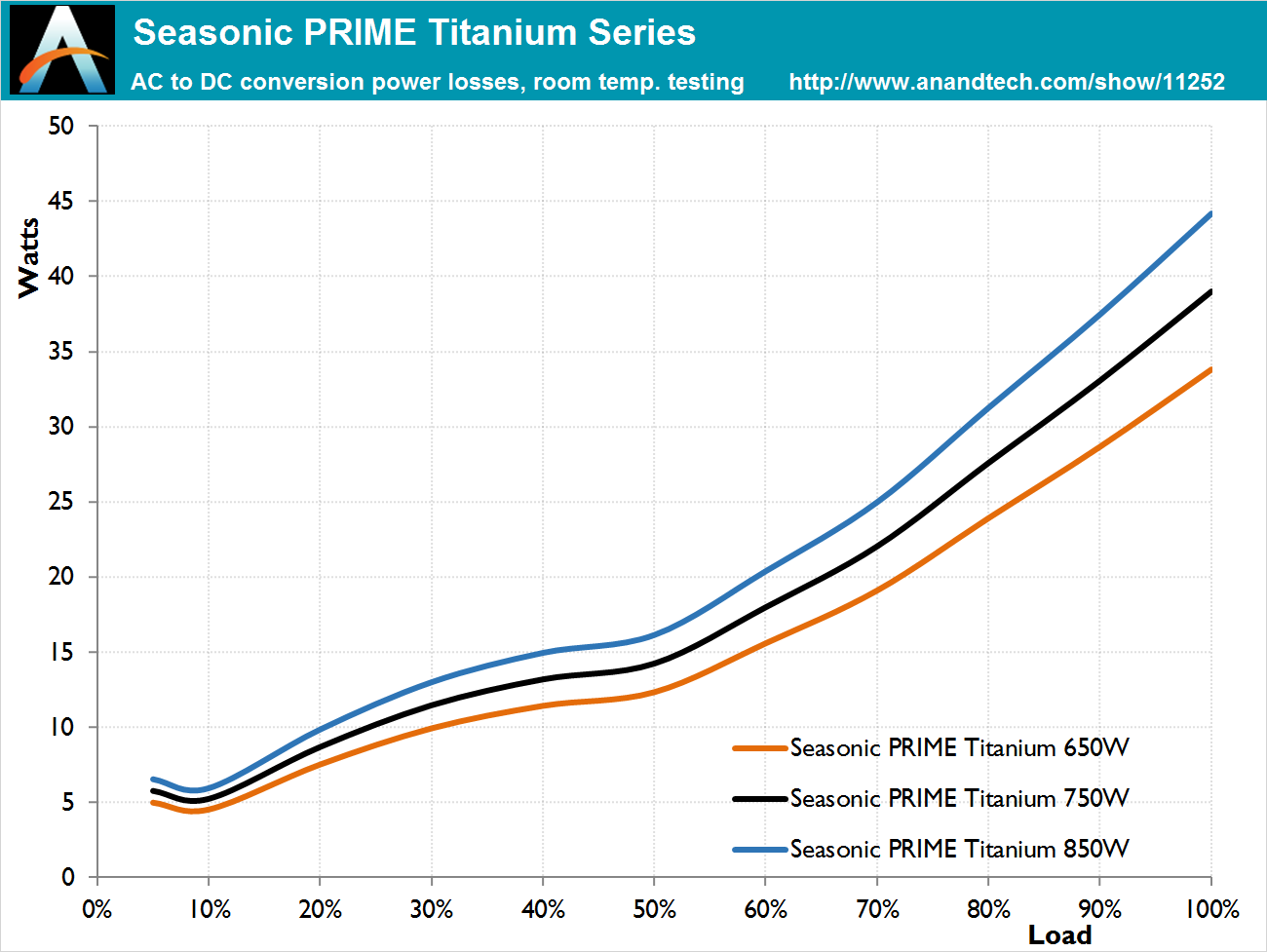
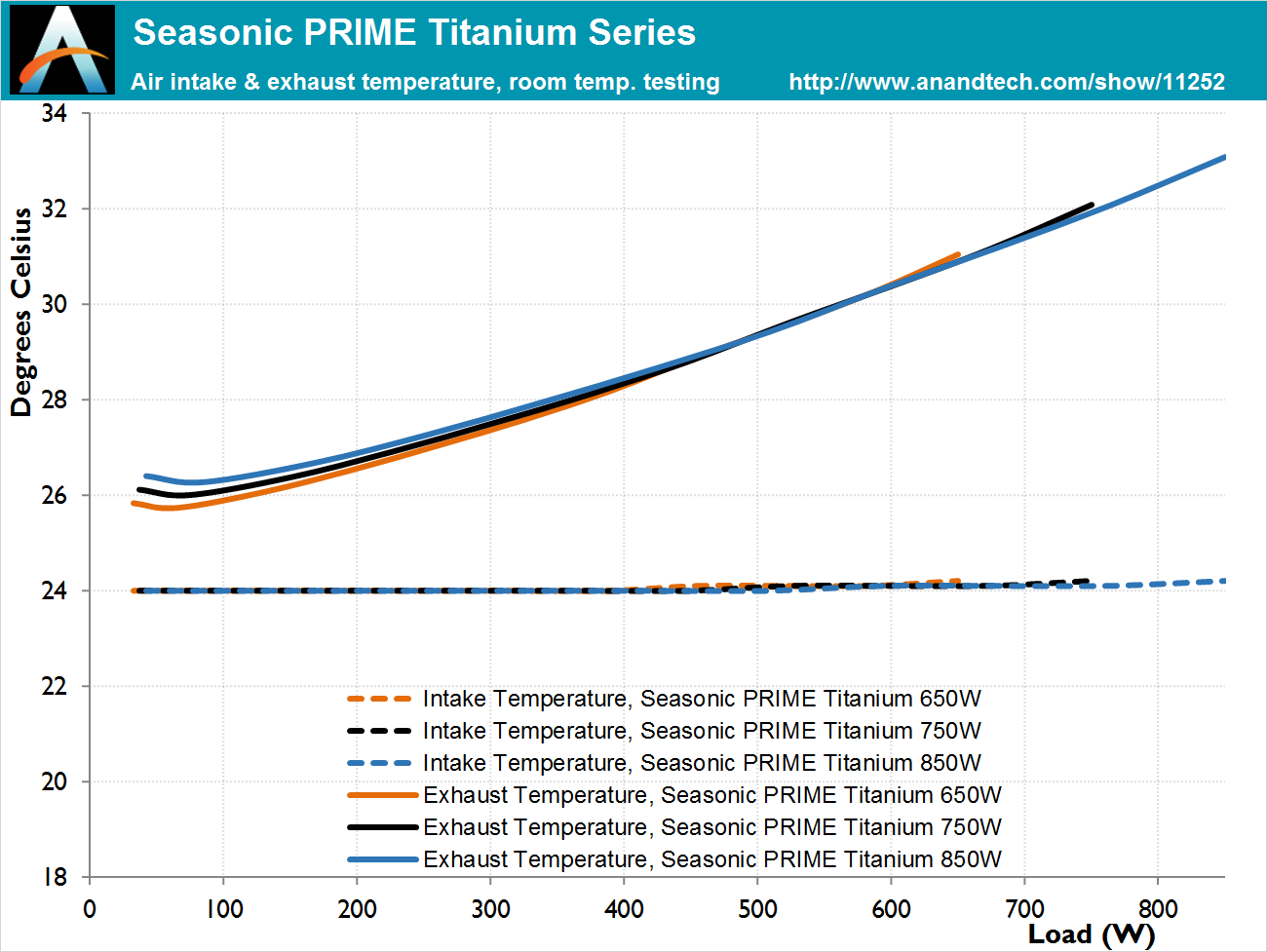
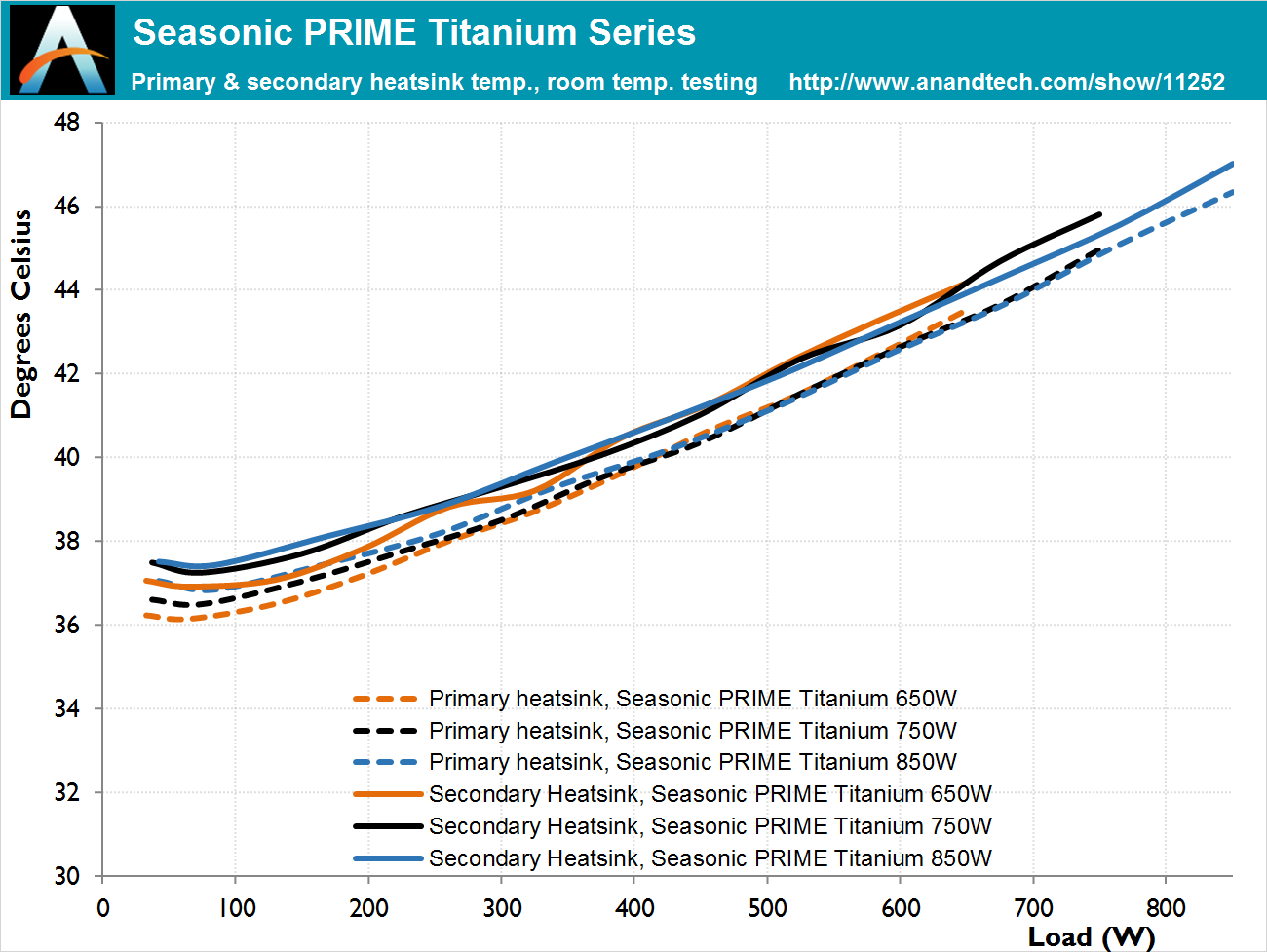
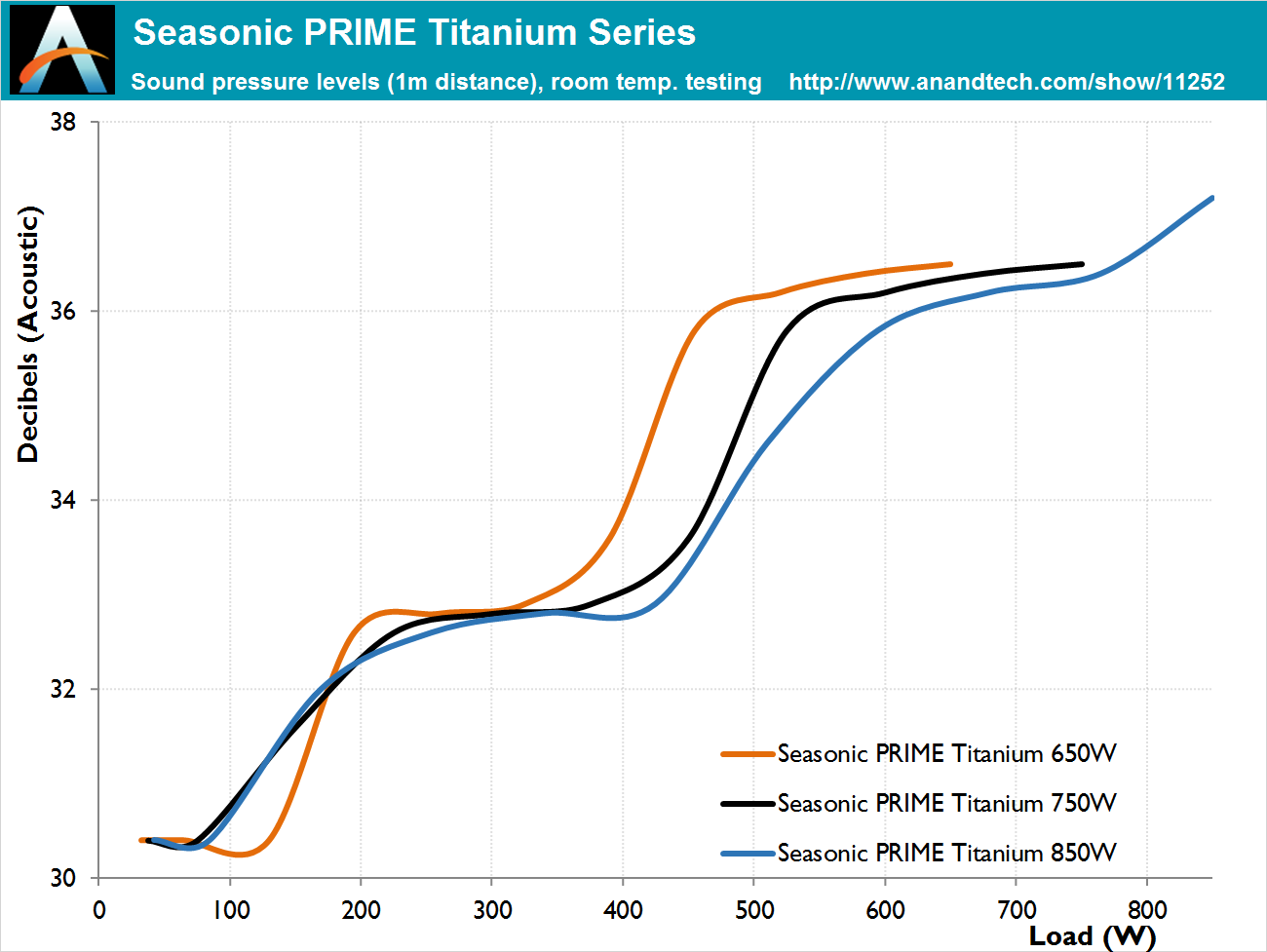








86 Comments
View All Comments
DanNeely - Saturday, April 8, 2017 - link
If Seasonic wanted to make a status connector to the mobo, they could just terminate it in a plug for a USB2 header like the one company currently making them is.EasyListening - Monday, April 10, 2017 - link
Does it do RGB?SkipPerk - Wednesday, May 3, 2017 - link
It does not do RGB because it is VR-ready!blahsaysblah - Sunday, April 9, 2017 - link
No, PS internals have gotten a lot better. The cabling/connectors have not kept up.As i went through the effort of having my latest PC have all custom power cables(not for looks), i researched quite a bit and than having done it(not just read/talk), the connectors and cabling can stand to get modernized quite a bit.
These connectors were designed for a time when the vision and landscape for PCs was very different. Everyone was going to have their own. Like how each house had multiple TVs. TV numbers have died off as the landscape has changed. So have PCs. The internals and toolings should match the new PC user. Grandma/pa/person who doesnt need it: they use smartphone/tablet/laptop. It's very much a power user.
status??? how about temperature, so you could have system fans do the heavy lifting? or give the OS a chance to do something about a bad situation?
Alexvrb - Tuesday, April 11, 2017 - link
OK, I get adding "status" output (even though it's a pretty dry and useless data stream to stare at if you have a PSU that's so rock solid it can run for a decade straight without twitching). But how exactly do you propose they "modernize" the cabling and connectors? Not even considering that changing connectors to a new standard for no good reason (other than to piss all over existing standards that work fine) seems silly, there's other issues too. Someone else mentioned it already but it bears repeating: if you reduce the number of wires, but you still need to carry the same amount of current, you MUST move to heavier gauge wires. That means thick, less flexible cabling that people would hate. Does that sound modern? What's the benefit? Are you a better engineer just waiting to show off your superior designs?Asryan - Wednesday, August 19, 2020 - link
I have the 850w but I'm experiencing gpu coil whine..I had read that this kind of coil whine is not dangerous for the devices , whether it is the power supply or the graphics card, could you confirm it to me.
What is weird is that the noise occurs at + 30FPS +, i've limited FPS to find out it does not occurs only at high fps as i was used to with coil whining GPU... I try to play with the sliders of MSI afterburner and I can hear that the sound changes .
After that I only hear it if the fans are at their lowest and the panel is open so if it is certain that it cannot harm my configuration, it is not very serious but I would like to be sure.
However I would like to understand because the problem arises with:
2 different graphics cards (EVGA FTW3 2080ti and Asus Strix 2080ti Oc that someone gave me for test purposes). The two cards do not make this noise in another config
2 power supplies of the same model (Seasonic Ultra Prime titanium 850w)
2 motherboards of the same model. Asus Maximus Hero XI
Cstate on and off
Mod cable cables or original cable
it's driving me crazy mostly because I don't understand WHY but I'm pretty sure it's psu related..
bill.rookard - Friday, April 7, 2017 - link
I have to say, I'm absolutely blown away by the quality of the power coming out of those units. The ripple figures are insane (in a good way!). Considering that I'm looking for a new PSU - this may be 'the one' even at a $160-180 price tag.helvete - Friday, June 16, 2017 - link
Exactly. shame they don't offer some 400 - 450W variant.Shadowmaster625 - Friday, April 7, 2017 - link
It is nice to know that if you pay an extra $70 for a power supply, namely a whopping $4-10 a year in electricity savings! Boy, high efficiency sure does pay for itself dont it?Phiro69 - Friday, April 7, 2017 - link
Written like a true Republican.